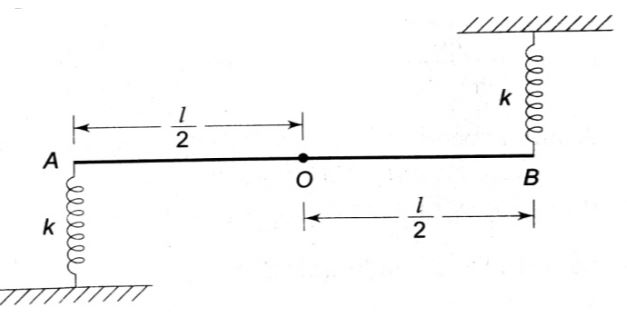Q.
The ends of a rod of length $l$ and mass $m$ are attached to two identical springs as shown in the figure. The rod is free to rotate about its centre $O$ . The rod is depressed slightly at end $A$ and released. The time period of the oscillation is

NTA AbhyasNTA Abhyas 2020Oscillations
Solution:
